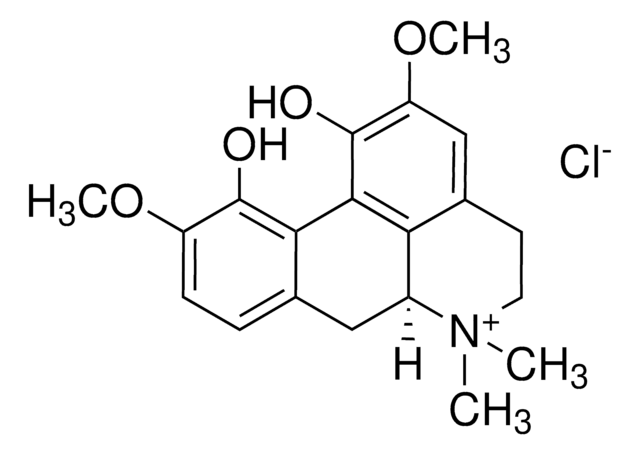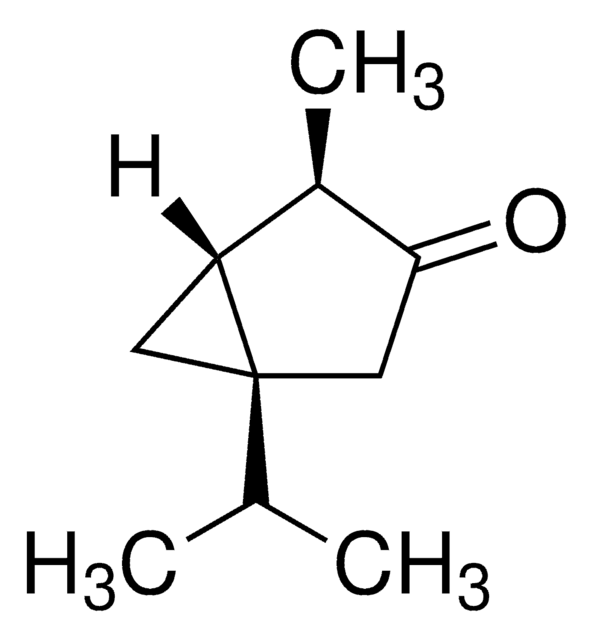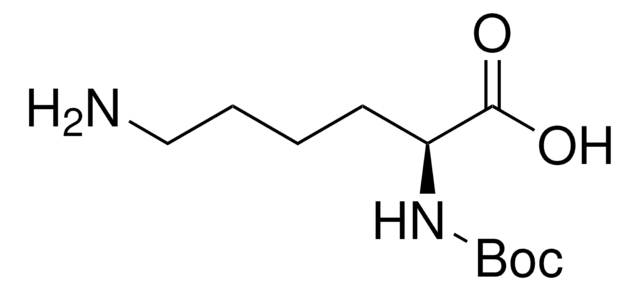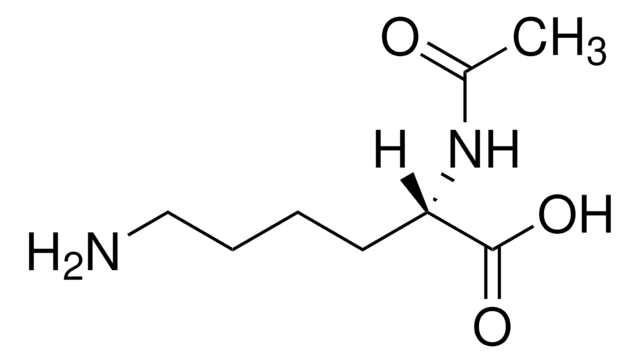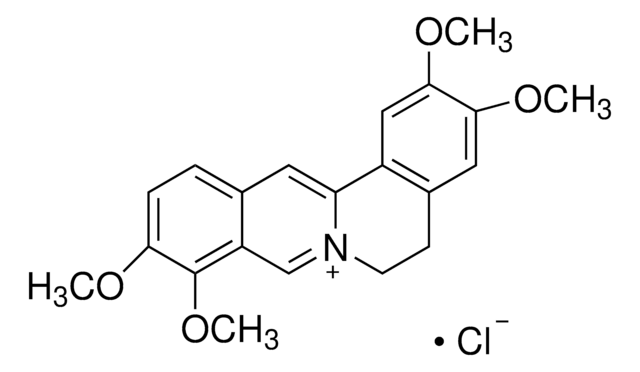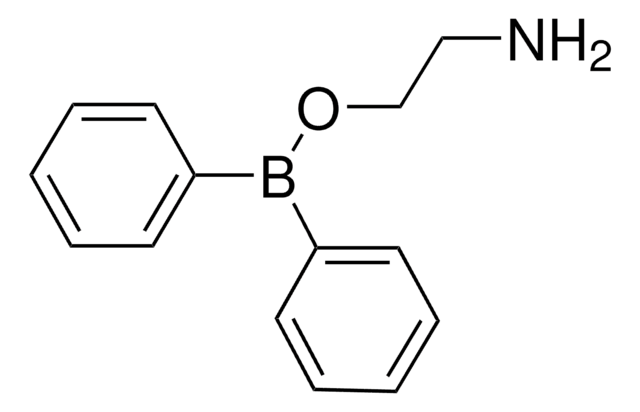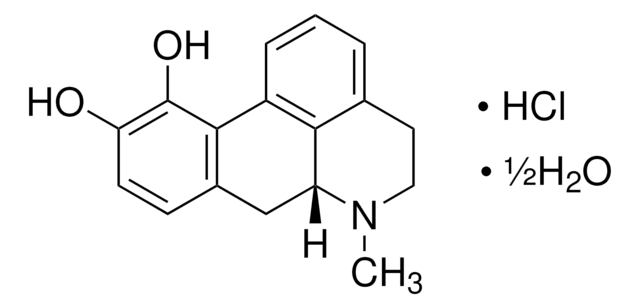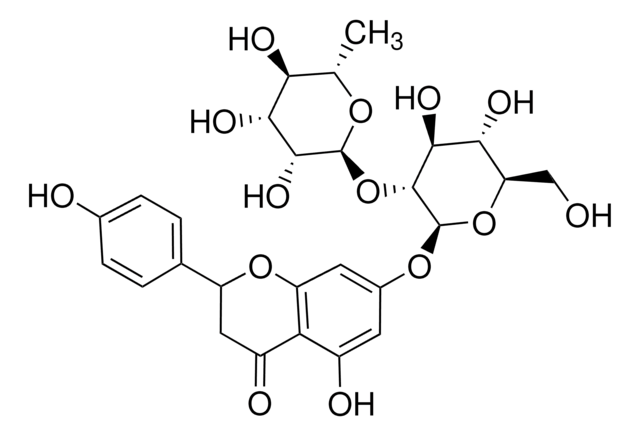추천 제품
Quality Level
분석
≥98% (HPLC)
형태
powder
응용 분야
metabolomics
vitamins, nutraceuticals, and natural products
저장 온도
2-8°C
SMILES string
OC1=C(OC)C=C2CC[N+](C)(C)[C@@]3([H])CC4=CC=C(OC)C(O)=C4C1=C32
InChI
1S/C20H23NO4/c1-21(2)8-7-12-10-15(25-4)20(23)18-16(12)13(21)9-11-5-6-14(24-3)19(22)17(11)18/h5-6,10,13H,7-9H2,1-4H3,(H-,22,23)/p+1/t13-/m0/s1
InChI key
YLRXAIKMLINXQY-ZDUSSCGKSA-O
일반 설명
Magnoflorine is a secondary metabolite and an alkaloid with a quaternary aporphine configuration. It can be found in roots, rhizomes, stems, barks, or seeds of many herbal plants such as Caulophyllum thalictroides (blue cohosh), Arisolochai bracteate, P. amurense, S. acutum, Tinospora crispa, Coptidis rhizome, etc. Magnoflorine constitutes approximately 65 % of the total alkaloids in roots and rhizomes of blue cohosh. It is also known as thalictrine and escholine.
애플리케이션
Magnoflorin has been used to test its contractile effects on isolated mouse uterine smooth muscle tissues and on isolated strips of Mus musculus distal colon smooth muscle tissues.
생화학적/생리학적 작용
Magnoflorine possesses several biochemical and pharmacological properties such as antioxidant, anti-inflammatory, immunomodulatory, anti-diabetic, anti-fungal, cardiovascular protective, and neuropsychological. It also acts as an α-tyrosinase inhibitor. It helps to increase pro-inflammatory responses induced by lipopolysaccharide (LPS). It exerts antitumor, anti-cancer activities by inhibiting gastric cancer progression gastric cancer cell xenograft mouse model.
신호어
Warning
유해 및 위험 성명서
Hazard Classifications
Acute Tox. 4 Dermal - Acute Tox. 4 Inhalation - Acute Tox. 4 Oral
Storage Class Code
11 - Combustible Solids
WGK
WGK 3
Flash Point (°F)
Not applicable
Flash Point (°C)
Not applicable
시험 성적서(COA)
제품의 로트/배치 번호를 입력하여 시험 성적서(COA)을 검색하십시오. 로트 및 배치 번호는 제품 라벨에 있는 ‘로트’ 또는 ‘배치’라는 용어 뒤에서 찾을 수 있습니다.
이미 열람한 고객
Potential biological activities of magnoflorine: a compound from Aristolochia debilis Sieb. et Zucc
Li C and Wang MH
The Korean Journal of Plant Resources, 27(3), 223-228 (2014)
Lead Compounds from Medicinal Plants for the Treatment of Neurodegenerative Diseases (2013)
Quillaja saponins are a potent contractor of uterine smooth muscle tissue in vitro
Bristol, Brian and Degolier, Teresa
Journal of Pharmacognosy and Phytochemistry, 7(5), 1252-1258 (2018)
Alkaloids
Lead Compounds from Medicinal Plants for the Treatment of Neurodegenerative Diseases (2014)
Magnoflorine enhances LPS-activated pro-inflammatory responses via MyD88-dependent pathways in U937 macrophages
Haque MdA, et al.
Planta Medica, 84(17), 1255-1264 (2018)
자사의 과학자팀은 생명 과학, 재료 과학, 화학 합성, 크로마토그래피, 분석 및 기타 많은 영역을 포함한 모든 과학 분야에 경험이 있습니다..
고객지원팀으로 연락바랍니다.